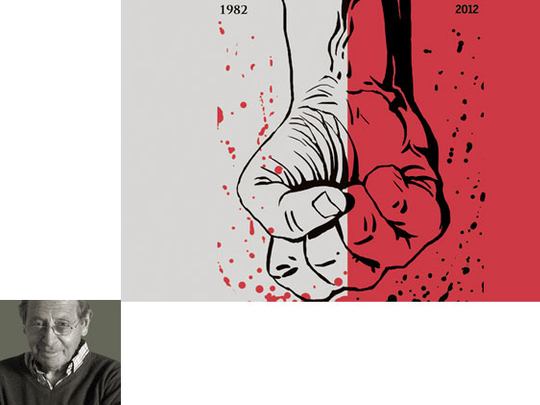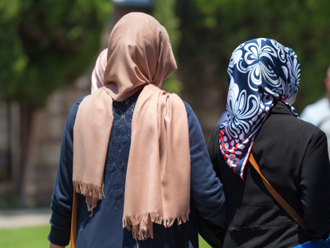
In February 1982, Hafez Al Assad, Syrian president from 1970 to 2000, brutally put down a rebellion in the city of Hama by his Islamist opponents. Three decades later, in February 2012, his son Bashar Al Assad used the same brutal methods to crush a rebellion in Homs, a sister city of Hama in the central Syrian plain in which Islamist guerrillas also figured prominently among his opponents. These two epoch-making events, which cast deep shadows over the careers of father and son, display remarkable similarities.
Preoccupied with foreign affairs, both Hafez and Bashar were slow to address the groundswell of complaint against corruption, rising poverty, youth unemployment and government neglect, which was to fuel the uprisings against them. They neglected the domestic scene, often turning a blind eye to the abuses and profiteering of their close associates, including members of their own family.
More fundamentally, both Hafez and Bashar believed, in those moments of crisis, that they were wrestling not only with internal dissent but with a large-scale foreign conspiracy to unseat them, abetted by the US and Israel and some of their Arab enemies.
In Hafez’s mind, his physical battle with Islamist guerrillas was an extension of the long unsuccessful struggle he had waged with Israel and the US over the nature of the political settlement after the October War of 1973.
Hafez had bitterly opposed Henry Kissinger’s 1975 disengagement agreement which removed Egypt from the confrontation with Israel. Similarly, he had interpreted the US-sponsored 1978 Camp David accords, and the Egyptian-Israeli peace treaty of the following year, as a conspiracy to leave the Arab world defenceless in the face of Israeli power — only the latest, as he saw it, in a long string of western conspiracies to divide and enfeeble the Arabs, dating back to the First World War.
In almost exactly the same way, Bashar’s immediate reaction to the uprising of this past year was to view it as the domestic wing of a foreign conspiracy by the US, Israel and some Arab states to bring down not only his own regime but that of Iran, his strategic partner, as well — and with them the whole Tehran-Damascus-Hezbollah axis, which in recent years has been the only real obstacle to American and Israeli hegemony.
The foreign conspiracies with which Hafez and Bashar have had to deal were, without doubt, very real, but they blinded them to the legitimate grievances of their angry populations, and caused them to over-react with great brutality when putting down their domestic opponents.
Hafez and Bashar both accused their foreign enemies of supplying the insurgents with satellite phones and other advanced equipment, as well as with weapons and cash. In 1982, the regime captured some 15,000 machine guns, as well as American-made sophisticated communications equipment. Last month, when the regime regained control of the Baba Amr quarter of Homs, it also claimed to have captured a rich haul of foreign-supplied weapons and equipment.
There are other similarities between the two crises. Hafez’s brother, Rifaat, commander of the Defence Companies, was the ‘iron fist’ which the regime used to hammer the opposition. For example, when terrorists tried to kill the president on June 26, 1980, by throwing two grenades at him and firing machine gun bursts, it was Rifaat, thirsting for revenge, who organised the massacre the very next day of hundreds of Islamists in Palmyra prison.
In Bashar’s case, his brother Mahir, commander of the Republican Guard and the elite Fourth Armoured Division, has been the regime’s ‘iron fist’ this past year.
There were differences, however, in the trajectories leading up to these deadly events. The rebellion against Hafez began in 1976 with a campaign of assassinations of persons close to him. One of the most dramatic of the terrorist acts was the gunning down of 83 Alawite officer cadets at the Aleppo Artillery School on June 16, 1979. From their safe haven deep in the ancient warrens of cities like Aleppo and Hama, where cars could not enter, the guerrillas were to emerge repeatedly to bomb and kill.
Between 1979 and 1981, terrorists killed over 300 people in Aleppo, mainly Baathists and Alawites. In response, the security forces killed some 2,000 Muslim opponents over the same period, and thousands more were rounded up and thrown into jail where they were often beaten and tortured.
Having failed to bring down the government by assassinations, the insurgents then attempted the bolder strategy of swamping it with large-scale urban uprisings in cities across the country, culminating in the seizure of Hama in early February 1982, when hundreds of fighters rose from their hiding places and, by the next morning, had slaughtered some 70 leading Baathists. The triumphant guerrillas declared the city ‘liberated’;.
With Bashar, it was the other way round: the uprising against his rule started a year ago with large-scale and largely peaceful street protests. It was only when the regime responded with live fire that the opposition took to arms, carrying out hit-and-run attacks, ambushes and assassinations against soldiers, policemen and government targets, culminating in the seizure of the Baba Amr quarter of Homs by the rebel Free Syrian Army, stiffened by fighters smuggled in from Lebanon, Iraq and Saudi Arabia.
In 1982, it took three grim weeks for the regime to regain control of Hama and hunt down the insurgents. Some ten thousand people were killed in the mopping up operations. In 2012, the battle for Homs lasted nearly a month. As at Hama 30 years ago, there was heavy collateral damage and great suffering by the local population, deprived of food, water and fuel in the cruel winter months. On both occasions, the regime used tank fire against residential quarters, shot suspects out of hand, tortured prisoners, and sent military units equipped with heavy weapons to root out the urban guerrillas.
Hafez’s most bitter enemies were the Muslim brothers. In the case of Bashar, Islamist guerrillas are also present in the opposition, and seem to be the main beneficiaries of weapons and finance from Qatar, Libya and elsewhere. Although they do not seem to be one cohesive group, but rather four or five different currents with different external backers, the Muslim Brothers are operating under the umbrella of the Syrian National Council based in Turkey. Even more extreme Islamists close to Al Qaida also appear to have entered the battle, smuggled in from neighbouring countries. Ayman Al Zawahiri, who took over the leadership of Al Qaida after Osama Bin Laden’s death, has called for a global jihad against the Syrian regime.
The long campaign of terror against Hafez from 1976 to 1982 was political insanity. By defeating it, Hafez won himself nearly two more decades of rule. In much the same way, the arming of the opposition against Bashar seems not to have advanced the opposition’s cause but, on the contrary, provided the regime with the justification for crushing it. If there is to be a transition of power in Syria, it does not seem likely to be imminent.
Patrick Seale is a commentator and author of several books on Middle East affairs.









